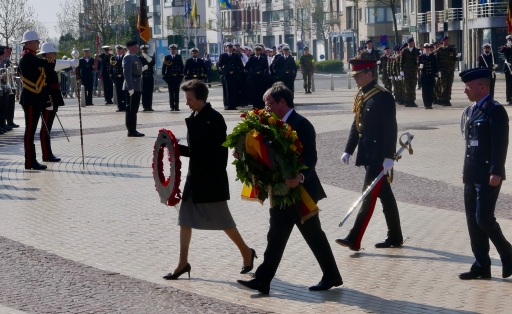The Centenary of the Royal Navy’s attacks on Zeebrugge and Ostend has been marked with commemorations in Belgium and the UK. Centenary News reports first from Zeebrugge itself, where descendants of those who fought in 1918 joined Belgian, British, German and Commonwealth representatives at the St George’s Day monument. With his impressions of the ceremony on April 21, here’s CN Editor Peter Alhadeff.
This was an occasion rich in symbolism, honouring the courage of men under fire 100 years ago, paying tribute to the dead of both sides, while also reflecting on the suffering of war, and making a heartfelt plea to strive for peace in the troubled 21st Century.
It opened with a call to be inspired by the words of Elie Wiesel, a survivor of the Holocaust and winner of the Nobel Peace Prize in 1986.
“Hope is like peace. It’s not a gift from God. It’s only a gift we can give one another.”
HRH The Princess Royal, attending on behalf of Queen Elizabeth, sat alongside Armin Laschet, Minister-President of North Rhine-Westphalia, representing the Federal Republic of Germany.
Together they stepped forward to lay the first wreaths, and then stood in tribute as a German military band played the traditional lament Ich hatt’ einen Kameraden, ‘I had a Comrade’.
And when the time came for the National Anthems, it was the army bandsmen from Hanover who performed God Save the Queen, their counterparts from HM Royal Marines reciprocating with the Deutschlandlied, ‘Song of Germany’.
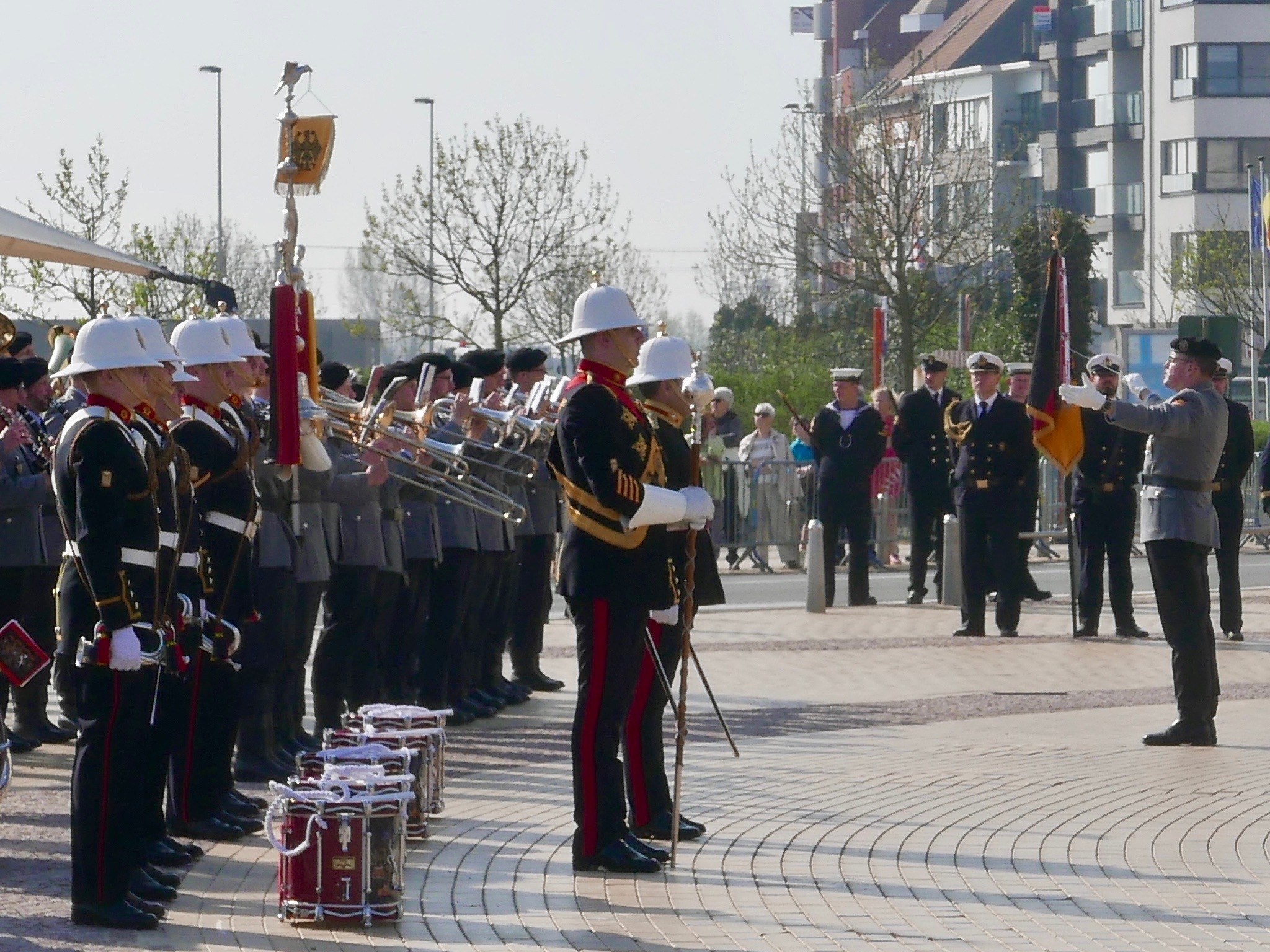 The musicians of HM Royal Marines Band Scotland and Heeresmusikkorps Hannover (Photo: Centenary News)
The musicians of HM Royal Marines Band Scotland and Heeresmusikkorps Hannover (Photo: Centenary News)
Among many poignant moments, wreaths were laid by descendants of the Royal Navy sailors and Royal Marines who attacked the occupied harbours of Ostend and Zeebrugge on 23 April 1918 – in a daring attempt to stop German U-boats reaching the North Sea.
Some were relatives of the 11 men who received the Victoria Cross – Britain’s highest military award – for the exceptional valour they’d shown during the St George’s Day Raid, and in a second operation at Ostend in May.
Families
The families included Rosemary Fitch, granddaughter of Captain Alfred Carpenter VC, the commander who battled to get the cruiser, HMS Vindictive, alongside for the storming of the Zeebrugge harbour wall, or Mole.
Ray Newland and his sister, Rosemary Gay, travelled specially from Melbourne to remember their grandfather, Able Seaman Leopold Thomas Newland. He was among 12 Australians on Vindictive. Like others involved in the Zeebrugge and Ostend raids, Leo Newland was a volunteer. For his actions, he was mentioned in dispatches. He and his fellow countrymen survived.
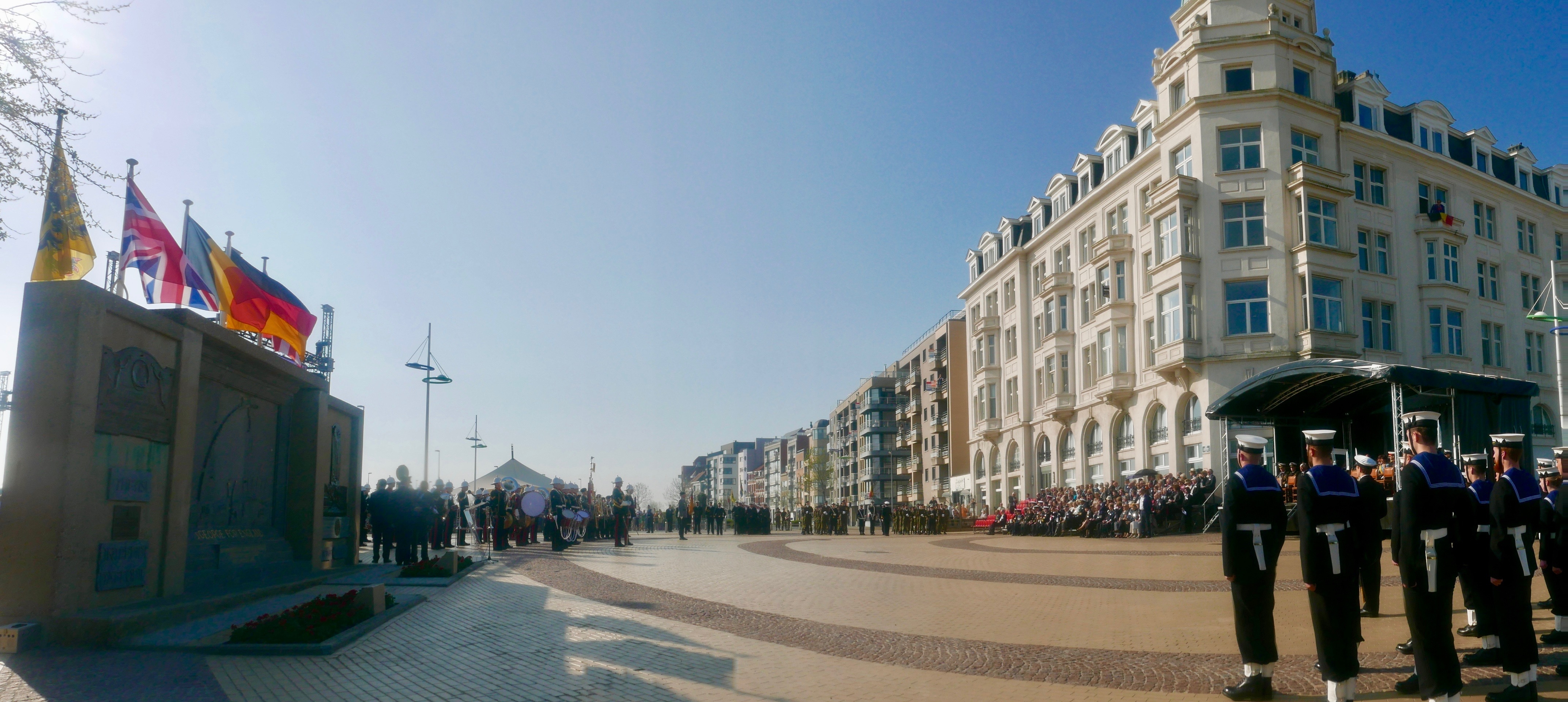 The parade lined up at the St George’s Day monument, with the former Palace Hotel on the right. Opened shortly before the First World War broke out in 1914, the Palace is the only surviving building of that era near the Mole. The Royal Navy’s Guard of Honour was provided by sailors from the frigate HMS Sussex (Photo: Centenary News)
The parade lined up at the St George’s Day monument, with the former Palace Hotel on the right. Opened shortly before the First World War broke out in 1914, the Palace is the only surviving building of that era near the Mole. The Royal Navy’s Guard of Honour was provided by sailors from the frigate HMS Sussex (Photo: Centenary News)
At the close, two white doves were released into the brilliant blue skies of a spring morning, while in the present-day container and ferry port of Zeebrugge, ships’ sirens were sounded in tribute.
In another ceremony, wreaths were laid at sea from the German frigate, FGS Brandenburg, whose crew, together with that of HMS Sussex from the Royal Navy provided the Guards of Honour at the centenary commemorations.
Reflection
Such sights and sounds have become familiar in 2014-18, as nations and communities have paused to pay tribute to the dead of WW1. But on this occasion there were also moments of reflection on the Centenary itself, a sense almost of starting to bid farewell. Soon, this period too will pass into history, leaving countless memories and a renewed legacy of commemoration and interest.
This has particular resonance in Flanders, where the battle sites of the Ypres salient have been the focus for so many events, and where the nightly Last Post ceremony at the Menin Gate, begun in gratitude by the people of Ypres in 1928, will continue to be performed in perpetuity. During the course of the Centenary, it has passed the landmark of its 30,000th sounding, an event streamed live to a worldwide audience in July 2015.
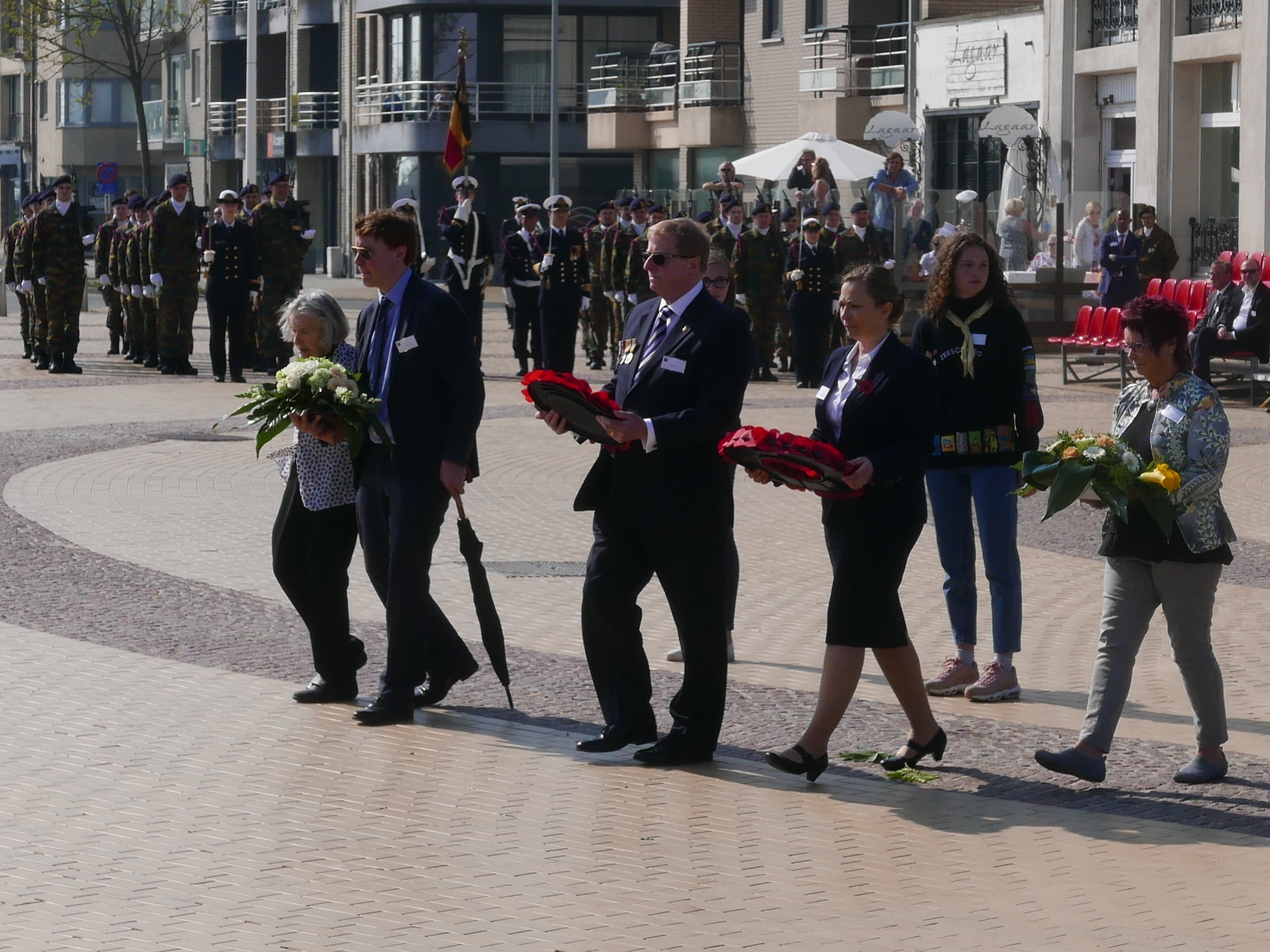
Descendants approach to lay wreaths at the Zeebrugge commemorations (Photo: Centenary News)
Geert Bourgeois, Minister-President of Flanders said: “During the four years of the Great War Centenary, the Government of Flanders has made great efforts in Flanders Fields and in all countries of the Commonwealth to commemorate the great sacrifice made by so many men.”
And speaking in German, he welcomed Germany’s participation in the Zeebrugge remembrance, ensuring the fallen of both sides were honoured.
“My message is for the sake of today, lest we forget the human loss and sacrifice of yesterday, for the sake of the world, let’s unite and work together more than ever to sustain peace, liberty and human rights,” Geert Bourgeois concluded.
See also in Centenary News:
100 years ago – the Royal Navy raids Zeebrugge and Ostend.
All 11 Victoria Crosses awarded for the operations have been united for display at the Battle for the North Sea exhibition, now open in Bruges.
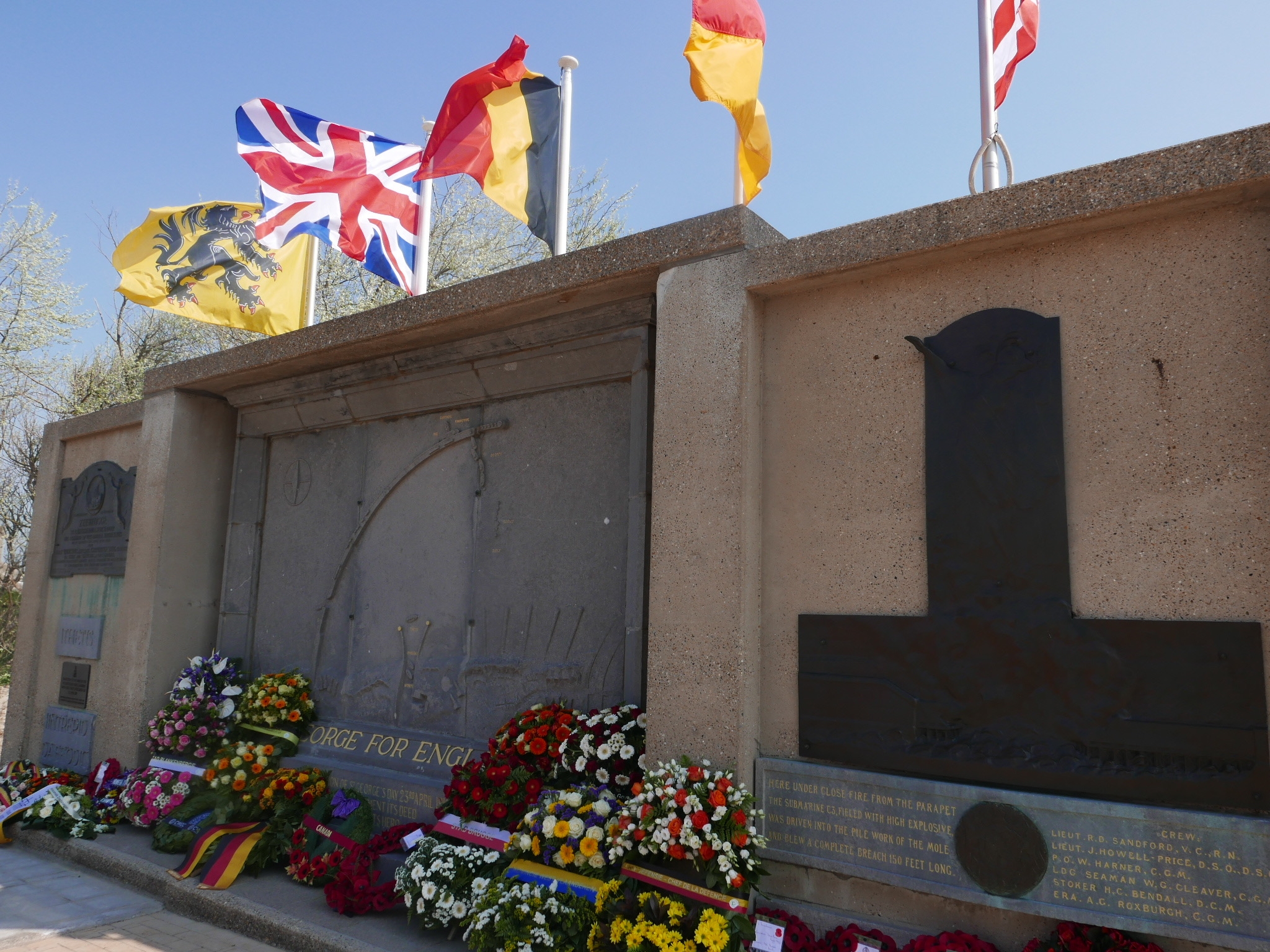 Wreaths laid at the St George’s Day monument. Unveiled in 1926, it shows the positions of the ships at the forefront of the attack (Photo: Centenary News)
Wreaths laid at the St George’s Day monument. Unveiled in 1926, it shows the positions of the ships at the forefront of the attack (Photo: Centenary News)
Reporting from Zeebrugge by CN Editor
Images: Centenary News
